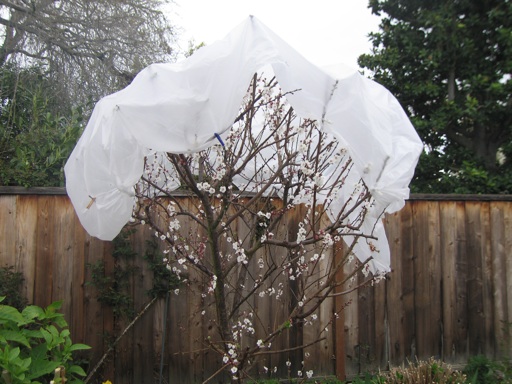
Last year, I did not harvest a single fruit from our Blenheim apricot tree. After a week or 2 of heavy rains in March 2011, the newly forming fruits were covered with mildew. Sometime later, they fell off.
This year, I am determined not to let rain ruin my apricot crop a second year in a row. So two weeks ago, when I heard that a week or more of rain was in our forecast, I decided to try an unconventional approach. I read on a website that some people cover their fruit trees to protect them from heavy rains. So I decided to give this technique a try.
Above is a picture of our apricot tree after we covered it with a clear plastic drop cloth. I used a .7 mil thick drop cloth that I purchased in the paint section of local big box home improvement store. I attached the drop cloth to the branches of the tree with clothes pins. I selected a thin drop cloth, because I wanted it to be easy to drape over the tree and light enough not to damage the blossoms. Getting the drop cloth on the tree was a challenge. We used a ladder and a pruning pole to drape the cloth over the tree and then spread it out. Our tree is only about 8-9 feet tall, because I prune it a lot. Trying to drape a drop cloth over a large tree would probably be impractical. The drop cloth stayed on the tree for a week through several days of rain including one night of heavy downpours. Last weekend, strong winds ripped it to shreds.
I left the apricot tree uncovered this past week, because we had dry weather. So far, it looks like the drop cloth was successful. Several small apricot fruits have already formed, and there is no sign of mildew on them.
However, a few days ago our weather forecasters predicted several more days of rain starting today. I think once most of the fruits have set they can survive the rain, but I don’t think they are there yet. Many of the apricot blossoms have just dropped their petals and have not formed fruit yet. That seems to be the time when they are most vulnerable to being knocked off by heavy rain or getting mildew after being exposed to several days of damp weather.
I covered our apricot tree again yesterday afternoon with a new clear drop cloth. This time I used a 1 mil 10′ x 20′ drop cloth, hoping the extra thickness would make it less prone to being torn by the wind. I also covered our multi-grafted pluot tree, which was easy to do because it’s so small (see picture below).

March 24 2012 | Apricots | Comments Off on Fruit Tree Umbrella
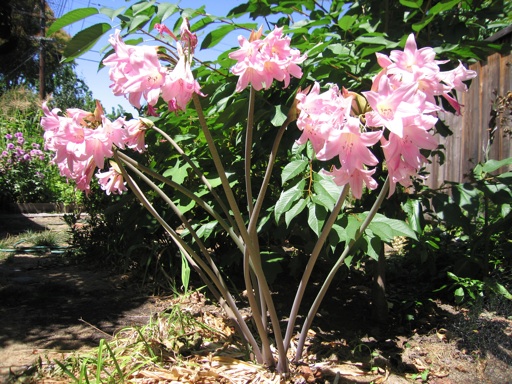
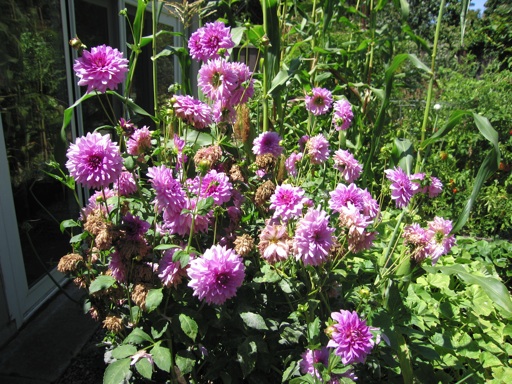
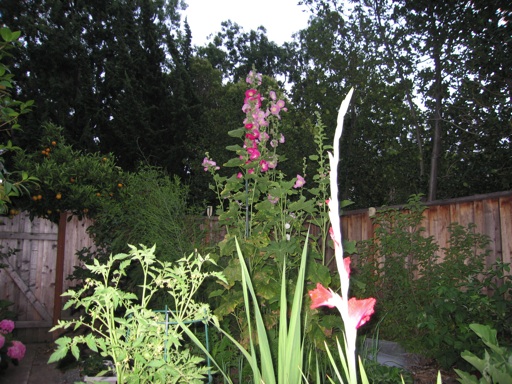
These are 3 pictures of flowers blooming in our yard this summer. The first picture shows an Amaryllis belladonna plant. These beautiful fragrant light pink flowers have appeared for the second year in a row from a bulb that I planted in the ground several years ago. The flower stems appear from the bare earth about a month after the leaves turn brown and die in June. Ours has about 10 flower stems this year, about twice as many as last year.
The second picture shows a cluster of purple dahlias that I planted in one of our raised bed gardens last year. These dahlias have grown vigorously and bloomed profusely in our raised beds, which get watered regularly and have some protection from snails and slugs. When I tried to grow dahlias in the ground a few years ago, snails devoured them.
The third pictures shows a group of hollyhocks growing in another one of our raised bed gardens. I planted the hollyhocks by seed last summer. They have grown very quickly over the past year with regular watering, but no fertilizer. Some of our hollyhocks are now over 8 feet tall. Our hollyhocks started blooming in early July, and they were full of dozens of flowers of various shades of pink and white for over a month. Now they are starting to fade. This picture was taken about a month ago.
August 20 2011 | Amaryllis and Dahlias and Hollyhock | Comments Off on Summer Flowers
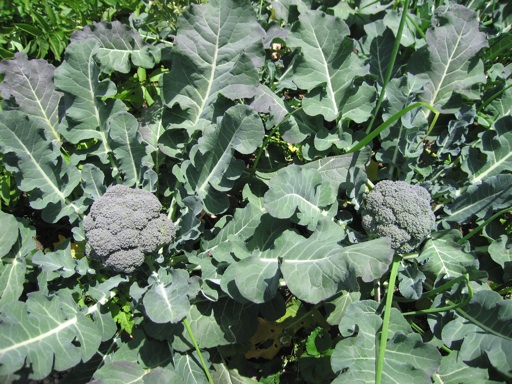
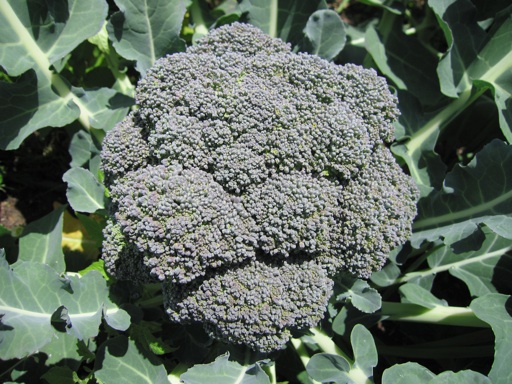
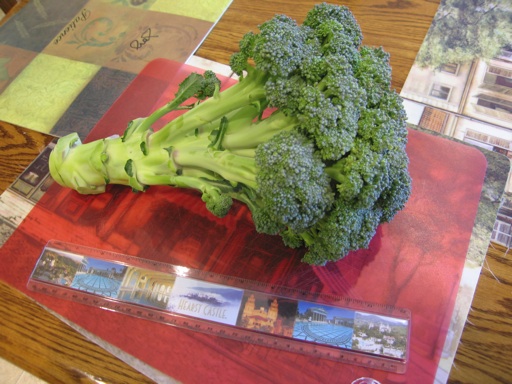
I first started growing broccoli about 2 years ago. We eat broccoli almost every week, because it’s so densely packed with nutrients. So I figured it would be fun to try to grow it ourselves. But I didn’t have much luck growing broccoli until this spring. In previous years, the broccoli plants didn’t grow much, and the broccoli heads were very small, about 3 inches wide. This year, our broccoli plants including the broccoli heads are huge. The largest broccoli head I have harvested so far this season is about 8 inches wide (see third picture above).
I planted a half-dozen broccoli seedlings back in mid-March in one of our raised beds. Last year, slugs ate many of the leaves of our newly planted broccoli seedings, which no doubt stunted their growth. So this year, I placed iron pellet snail/slug bait around the plants as soon as I put them in the ground and reapplied it every 2-3 weeks.
I fertilized our broccoli plants this year at least once a week with a water soluble general purpose fertilizer. For a period of time in April and May, I was fertilizing the plants 2-3 times a week (which may have been an overkill). Starting in early May, the plants really started to grow rapidly, and before I knew it, they were huge. Each plant is about 24 inches wide, measuring from leaf tip to leaf tip. Some of our individual broccoli heads from one plant are as big as a cluster of two or three grocery store-sized broccoli heads! In terms of flavor, our broccoli tastes about the same as grocery store broccoli. Although, our broccoli tastes fresher.
The weather in our area was ideal for growing broccoli this spring. The temperatures here have been mainly cooler than average for the past several months. Broccoli grows best with highs between about 63 and 74 degrees F. We have had very few warm days this spring, and the high temperatures have been mostly within that range. Our average high for June is about 77 degree F. Typically, it would be too warm for ideal broccoli growth by about late May in our area.
June 11 2011 | Broccoli | Comments Off on First Success with Broccoli
These are more pictures of the roses in our yard that are blooming this weekend. The first photo shows our red Black Magic tree rose. It’s not a fragrant rose, but it has very long lasting perfectly-shaped flowers.
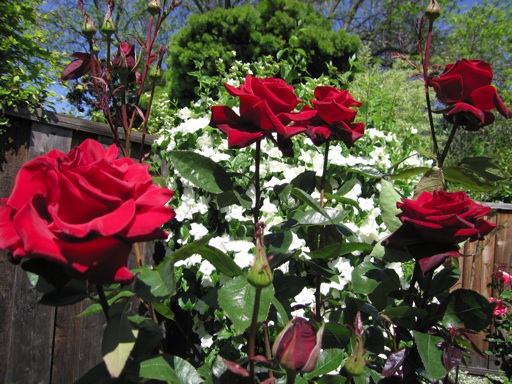
This is another photo of one of our pink Color Magic roses.
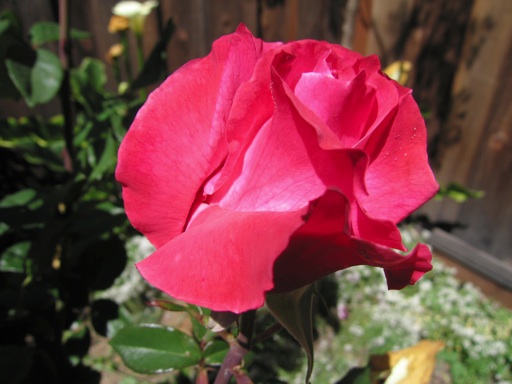
This is another photo of our Sheila’s Perfume rose.
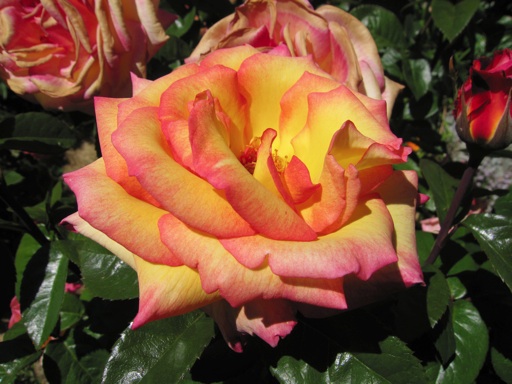
This is a photo of our Double Delight rose.
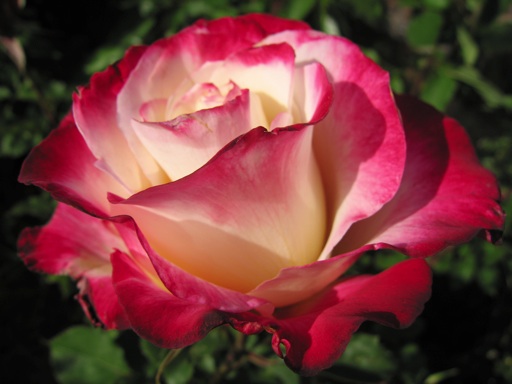
This is a photo of our Surprise rose.
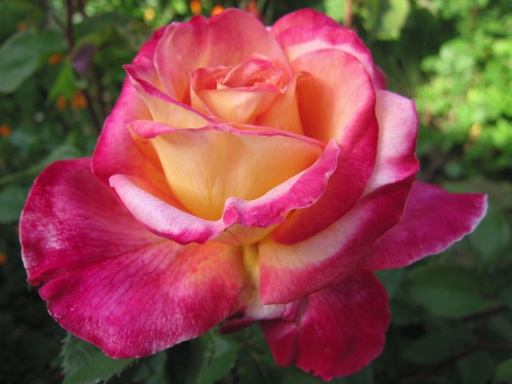
April 30 2011 | Roses | Comments Off on More Rose Pictures
Of course, spring isn’t just about roses. We also have some very attractive white flowers blooming in our yard this month. The philadelphus plant shown below that we have growing near our fence has been looking better every year. Ever since I removed 2 old trees that were shading it, this plant has really taken off and grown rapidly. Every April for the past few years it gets covered in beautiful white flowers.
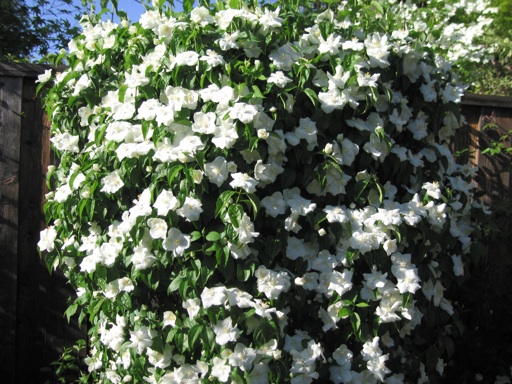
Below are a few plants called Viburnum Opulus Roseum (also known as the Snowball flower) that we planted as nursery transplants last year. They are full of their characteristic snowball-like flowers now. Ironically, their buds form and open as springs arrives, the temperatures warm, and snow (if you ever get it in your area) is just a distant memory. Both the snowball and the philadelphus are only spring bloomers. Both have a tendency to grow quite large unless pruned regularly.
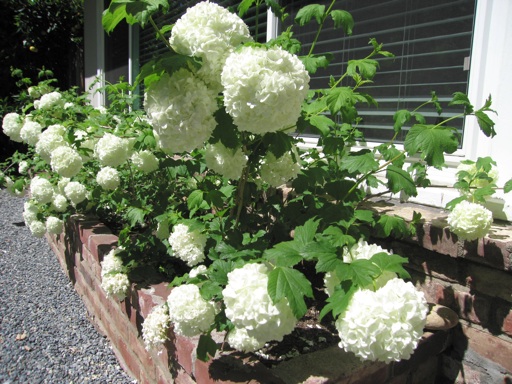
April 29 2011 | Philadelphus and Viburnum | Comments Off on More spring flowers
« Prev - Next »














